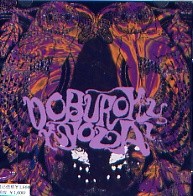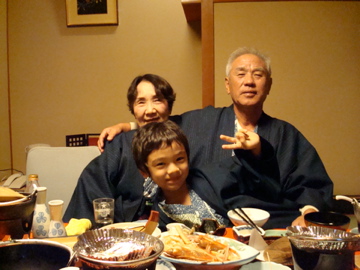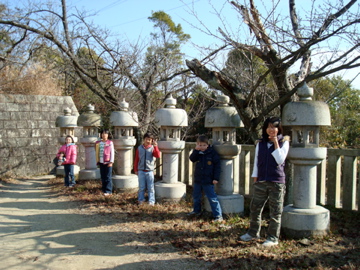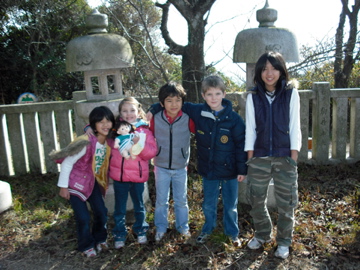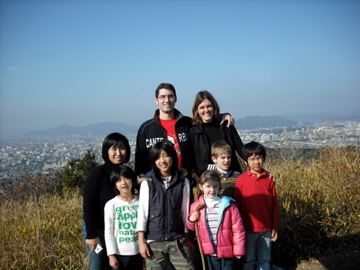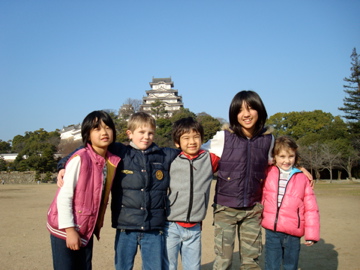Movie reviews:

Watchmen – The Watchmen graphic novel (i.e. comic book) by Alan Moore is a masterpiece. This film is the next best thing. Although it doesn’t capture all of the graphic novel in its entirety – how could it? – it does a great job with those bits that it does. The ending has been changed somewhat, but I thought this had been done in a way that was actually a bit better than the graphic novel in parts (the disaster at the end of the graphic novel does come off as a bit absurd), although Dr Manhattan’s decision at the end is ultimately not satisfying (and a bit similar to the Batman’s decision at the end of The Dark Knight, come to think of it…). The characters are all very well cast, with the exception perhaps of Dr Manhattan, who is just a bit too CG-ized for my liking. Oh well, why be a scrooge when the framing was so masterful, and Rorsach so superbly crafted.

Handsome Suit – I liked this silly formula film a bit more than I should have. Rather than featuring a fat suit, such as in Big Momma’s House or Mrs Doubtfire, the film features a handsome suit (nice idea); the title of the film gives away the whole story practically, but basically the main character in the film was born so ugly that someone takes pity upon him and invites him to try out a prototype “handsome suit”, which can make the wearer very handsome, and can even change the voice of the wearer to become more like that of a handsome man’s. The movie is partially about humorous situations involving the handsome suit, but it is also about situations of self-pity for a man and his ugliness, especially when he sees how differently people treat him when he is a handsome male model compared to when he’s just his ugly old self. There are a few tender moments when the actor seems truly pitiable in his soul-searching over the nature of beauty – in his real life he’s always been short and fat and ugly, so it must be heartfelt – and anyone who’s ever been made to feel ugly or a reject, or who wondered what it was like to be beautiful, might sympathize. Of course, the “surprise” twist at the ending was a surprise to nobody except the main character, but that’s all right – the movie is filled with charming supporting characters and plenty of slapstick and is a real pleaser. My seven-year-old son loves this movie and talks about it all the time. The perfect in-flight movie.

I Am Legend – The third time (or so) that the book has been filmed, I Am Legend is about the last man on earth, surviving in a destroyed New York with his dog amidst flesh-eating zombies who come out at night. Will Smith plays it very well, and for the first 40 minutes of this 90-minute film we observe his life, we learn about the rise of the airborne virus that turns all of humanity (except our hero, who is immune) into hideous creatures, and how he searches for a cure for the virus. Of course, the movie eventually gets over a quiet introduction and becomes a scary escape-from-the-zombies battle to survive, with tons of near escapes and cliff-hangers. I actually stopped watching at this point, since I wasn’t in the mood for zombie escapes, intending to watch the rest of the movie in fast forward but never did. Oh well, maybe later…

The Darjeeling Limited – This movie feels no different than any other Wes Anderson film – it has Owen Wilson and Bill Murray and Anjelica Huston in it – and yet, there’s something different. What is it that is not quite the same? Is it the fact that the film is set in India, that his cast of characters now includes Adrian Brody, or that it’s finally been made clear that all the films are intended to run together? There’s nothing in the films any more that can be separated from one another, and maybe that’s a good thing – aren’t Nobel prizes granted for a cohesive body of work, rather than a single masterpiece? Non sequitar dialogue, non sequitar scenery, the trademark drift around the location, and the subtle (but hilarious) sight gags – in this one, our protagonists inexplicably buy a cobra at market. This one has the heavily mustachioed Jason Schwartzman, an actor I don’t know but have enjoyed in this film; he also helped to write the screenplay, indicating that he’s entered the troupe (maybe he’s been in it for a while and I’m only noticing now…). Flashback scenes where he is clean shaven are interesting for contrast, as is the “play before the movie” sequence with him and Nathalie Portman, playing a slutty something-or-other. The film strikes me as one of the more enjoyable Wes Anderson movies. I like it. Bill Murray’s small, subtle role is great (some may consider it a mere sight gag), as is the Indian setting, as are the train staff, as are the villagers, as is the tiger. Go, tiger, go.

Juno – Juno is immature and a bit annoying, but her repartee and relationship with the yuppies who want to adopt her unborn child are good fun, as is the odd dialogue she has with her father, the ubiquitous character actor RK Simmons. Any movie that references the Melvins with Sonic Youth is all right in my book. I’m also amused that Michael Cera, Juno’s boyfriend (who, like the actress who played Juno is Canadian), was also in Superbad, the next movie I watched…

Superbad – Who is Michael Cera? Why does he keep turning up in films I see these days? It doesn’t matter, this movie is very funny, totally absurd, and takes the piss out of cops like no other movie I’ve seen. This is totally silly; but, in the end, who really cares?

Thumbsucker – I remember the book being really good, but this movie about a teen who’s still sucking his thumb definitely wasn’t. Sure, there are tender scenes – Keanu Reeves is surprisingly good, and so are lookalikes Vince Vaughn and Vincent D’Onofrio – but Tilda Swinton is surprisingly boring, the main guy is so totally unforgettable that we still never understand from him why his parents’ marriage is troubled, why he sucks his thumb, why he takes Prozac, and why his 10-year-old brother has more characer than he does…

Jimi Hendrix Live at the Isle of Wight: Blue Wild Angel – It sure was cool to finally see Jimi playing that mean right-handed Stratocaster upside-down as a leftie. Wild, man, really wild. Not much here in the form of a documentary, but who cares, many – it’s Jimi!
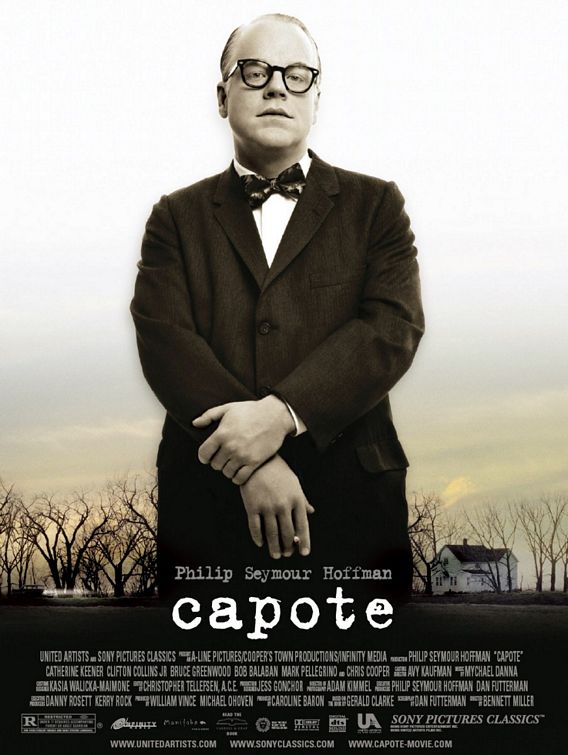
Capote – Anyone thinking that this was a film about the life of Truman Capote would probably be disappointed – it’s actually about the events in Capote’s life surrounding his most famous book, In Cold Blood. Starting in 1959 when Capote reads about the Clutter murders in the newspaper, he eventually gets close to the Kansas community that the murder takes place in – despite his conspicuous and gawky other-worldliness – and spends seven years writing the book, in the meantime getting to know the murderers, and maybe even falling into a love/hate relationship with one of them. For anyone who’s ever read the book it should be obvious which of the two murderers he tried harder to understand, and this is the central relationship in a book about a man who has difficulty being truly sincere. Perhaps one of the most interesting parts of the movie are about Capote’s manipulativeness and how people still sort of love him for it. The relationship with childhood friend Harper Lee is also interesting; Lee famously only wrote one book, and after In Cold Blood Capote stopped publishing as well.
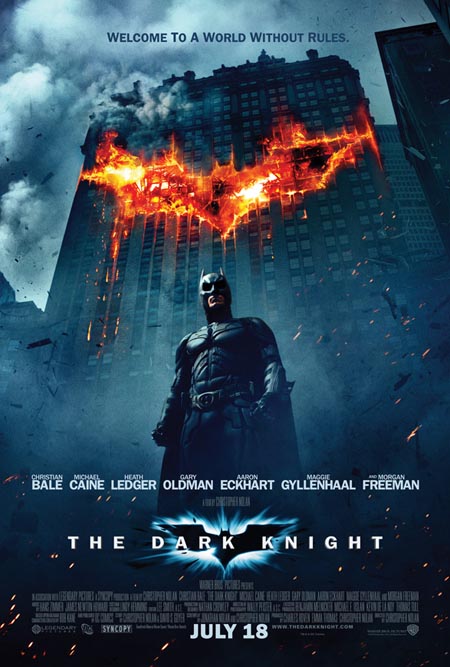
The Dark Knight – If there was ever a better example of how a sequel can be soooo much better than the original, I really can’t think of any. It may have been just a bit too violent, but all the parts fit together so well; the Joker’s constant out-thinking of his opponents, his senseless violence, the inexplicable loyalty of his crazed, doomed hoods, and the Batman’s ultimate, problematic decision. Aaron Eckhart was quite good as Two Face (the make-up was fantastic), and Morgan Freeman’s baffling presence was limited… as was Ng Chin Han’s, as the most unthreatening Asian villain ever. Watch it for Heath, who is mystery itself…

Transformers: Revenge of the Fallen – This movie got very low reviews, with the most commonly mentioned word being “tinnitis.” I found this movie very similar to the first in so many ways that I can’t really criticise it too harshly – it was no greater nor worse than any of my expectations, so in that sense I enjoyed it more than the first one, especially the first half. My joy upon seeing John Torturro in the second half was one of a fulfilled expectation, and his performance didn’t let me down. The good points of the movie are: Megan Fox, Megan Fox, and Megan Fox. I also found Shia Leboeuf actually less irritating than the first movie, which also kind of surprised me, and Sam’s parents had great scene-stealing dialogue (although a bit stupid, and not as good as what we had in the first film). The bad points of the movie are the same ones of the first movie: can’t seem to care too much for any of the Transformers, except maybe Optimus Prime a bit, it’s too loud, the action is very hard to follow, and nobody can ever understand how or why organic robots would turn into mechanical devices. The plot was kind of silly, and at one point allowed Shia Leboef to do a Gerry Lewis Nutty Professor routine (which, although it was pointless, he at least could pull it off quite well). There’s another scene at university where it was made to look like the freshmen go out to a nightclub and every female freshman is some sort of a hooker/go-go dancer (are American universities really like this?). It morphs to a freaky scene that somehow combines Terminator 3 with Terminator 2 and Species. Why is it that only ONE Decepticon can take human shape? Oh, how convenient! Weird and a bit creepy.
CD reviews:

Kahimi Karie, “Leur L’existence (sic)” – Kahimi Karie is a name I heard many years ago, I don’t remember how. She has released several albums and is part of the Shibuya Sound, which includes Cornelius and Pizzicato Five. My interest in her resurfaced when I saw her name referenced in the Detroit Metal City comic book – apparently, she is the favourite singer of Negishi-kun, the lead singer of the band in his alias Johannes Krauser II. This four-song EP comes with a mini-disc of songs that seem to be the same as the ones on the CD-sized EP. First song “~プロローグ~まじめに愛して!” is sweet and “la la la” modern, credited to Serge Gainsbourg, and busy with lots of productive sounds, wiry and somewhat gritty, it’s a superb bit of soundsmanship. Second song “若草の頃” uses a bit of Lou Reed’s “Walk on the Wild Side” riff and has a bit of fun, with lots more “la la lai la la la la la la”. KK comes more into her own on third track “偽りの恋~愛のL’amour~”, where she’s actually singing – a duet, nonetheless – with real drama and pathos. ”~エピローグ~まじめに愛して!” goes back to the “da da da da, da da da da da da”, but finishes it off with some pleasant birdsong. Gorgeous EP.

Kahimi Karie, “K.K.K.K.K.” – More sparse and electronic than previous works – witness the beep-beep version of the reggae classic “The Harder They Come”, K.K.K.K.K. among its 11 tracks are four collaborations with Momus, the Scottish eccentric-of-many-interests, who seems to attach various audio eccentricities to Kahimi Karie’s pleasant Mediterranean ditties, which carry a relatively sparser production values than the “Leur L’existence” EP. “The Symphonies of Beethoven” is interesting in that it uses some familiar themes to weave a new pop song.
エレファントカシマシ, 明日に向かって走れ -月夜の歌-” – Elephant Kashimashi is a really stunning band. Much in the vein of Manic Street Preachers, the songs are tight, well-written, with great guitar hooks, and a strong vocal presence. Lead singer Miyamoto Hiroji is highly energetic and he just belts them out. Opening track “明日に向かって走れ [Album Mix]” is a breathless, flawless opener and with loud vocals followed immediately by loud guitars, sets the tone for the whole release. Nearly every song is very good, with lots of grizzly rockers and a few more mellow numbers, each with the same gutsy vocal style and guitar licks throughout. Naturally the production is flawless. Try to find this J-pop classic if you can.

Yi Paksa (also known as “E Pak Sa”, “Tape 1″ – This is some of the nuttiest music ever invented, a manic Korean folk singer yelping and yowlping over a jaunty electronic beat. Yi Paksa is a legend, and the songs are delirious and infectious and bubbling over with vigour, reminiscent in ways of the energetic folk songs of Okinawa as played by Kina Shokichi’s Champloose. The breath-taking part of this release is that the 33 songs on this 57-minute CD all run together – it’s one long song and he’s singing non-stop! Great stuff if you can get your hands on it. Check him out on YouTube under the name “E Pak Sa”.

Zip Code Rapists, “94124 EP” – Seven songs, 21 minutes, from the freaky Neil Hamburger outfit that starts out with ugly live screaming, before breaking into the ugly funk of “Zip Code Gentlemen” and the bizarre country of “Ranch Style Beans” and “Happy Like Harry,” not to mention the fingernails on chalkboard cover of “Riders on the Storm” with ad-libbed lyrics. Yowza!

Love Love, “islets of langerhans” – An eight-song CD, only Love Love’s second, includes three tunes from their stunning debut “Overfeed.” The new songs on this release seem to be rather My Bloody Valentine-informed, which marks a change from their jazzy hardcore with scary female vocals sound, making “islets of langerhans” feel a bit mixed-up in terms of the sound it wants to achieve. ”I Envied” is on Overfeed, but this version has a lot more snakey bass all along the middle, making it a very fun number. For some reason, the seventh track “********” is silence, while final track “*” is a psychedelic number that sounds nothing like Love Love at all, probably on account of the U2 guitars and the male vocals in English – which probably come from bass player Kazuo, although Yuki does drift into the song eventually. The song eventually becomes a typical Love Love jam, though, and caps the release on a high note.

Limited Express (Has Gone), “The Best is Coming” – Limited Express (Has Gone) used to play once or twice a week in the Fandango live house in Osaka’s Juso area. The guy who worked there was the guitarist, and I always wondered what they sounded like. I guess after getting all that practice they stuck together, and after I left Japan in 2003 they started releasing albums, like this one from 2006, which includes a CD of 12 songs and a DVD with eight songs; they also seem to have some overseas recognition, so good on them. Every review of the band that I’ve ever read compares them to Melt Banana, and on some songs they do – the aggressive bass lines, the chirpy female vocals, the angular guitar sounds – but they are hardly as tight, fast or aggressive, and if I ever need to reluctantly admit the similarity I’d rather say that if they sound like Melt Banana, they are a sloppy, relaxed hippy version. The songs are generally very unusual, guitar oriented, and busy. But they shift around for mellow parts. They can also be a bit annoying at times, with strange “ichi ni san” moments that I can’t really be bothered to figure out if they are significant or not. Another band that they can sound like at times is OOIOO, with the chirpy meaningless vocal sounds. Either way, the music is fun to listen to, although not really quite as good as Melt Banana or OOIOO.

jenny on the planet, “for” – My friends Kazuo and Yuki in the Japanese psychedelic hardcore band Love Love highly recommend jenny on the planet. Singing wistful Belle and Sebastian/Camera Obscura/Kuuki Koudan songs in Japanese and English, the tunes are are pretty and quite enjoyable. Songs like “Weekend Boots” combine spy movie soundtrack guitar with male female voices intertwining saying “I like this red/blue one” intermittently, like a couple arguing on a weekend shopping trip, before progressing into a long intrumental outro. Their longer songs at the end of the release have that haunting Nagisa Nite-like tone that I really love late at night while drinking gin and tonics after everyone else in the house has gone to sleepy at the end of a sleepy weekend at home…

Grind Orchestra, “SoWap” – Grind Orchestra is a project of former Boredom vocalist and drummer Yoshikawa. The music is zany and avant garde, with plenty of percussion and vocals and grunting and groaning, adding in strange electronic space machine sounds. Don’t expect guitar riffs or bass lines in this project at all. These guys are a lot of fun live, and very intense. Second song “Life-sized Monster” sounds like an old traditional Japanese stage play with theremin and other sound effects. “Beguin the Grind” is a bit of a Hawaiian song with Theremin, and on song number four, “Periscope”, we finally begin to hear a brush of guitar sound, mixing in with the theremin and percussion and vocal. Funky! Groovy! “Jungle Marriage” is primitive and tribal and good fun, “Take the Kurawaanka” is a spacy drony repetition of the theme of “kurawankai”, probably one of the more musical numbers with near-real singing on the album, the track also samples Led Zeppelin’s theremin from – I think “Whole Lotta Love”. “Bo-Samba” is just that, a party song, and “Hah-Di, Gah-Di” is a bash-a-thon with strange sound effects, crazy rhythms, and “Second St” is more of the same with the addition of some cool Jew’s harp. “B.G.S. (Epilogue To Monster)” is more of the same, but with tons of screaming.
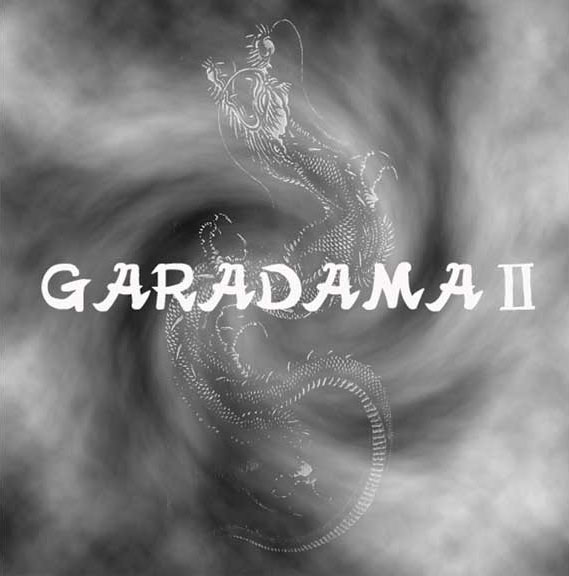
Garadama, “II” – A power trio that out-heavies the mighty Blue Cheer themselves. Run away music, as in “lock up your daughter, lock up your wife, this music is going to EAT you.” Freaky, scary fat bass licks, slower than sludge thick guitar riffs, and scary “I am Hellspawn” vocals. Artless, yes, but very scary, and totally on. “Dragon Shrine” starts off with a slow, scary riff, so do “My Eyes,” “Soliloquy,””Dogma Part I,”:Who Does Try To Kill Man?”, and “Dogma Part II.” Well, not all of them, just the odd-numbered songs, the even-numbered songs start off with nifty bass sounds, but everything else is of a single, killer tone. The 2:26 “Dogma Part I” has extra scary “whisper vocals” before building up and then only promising to blast off into the upper atmosphere; a few songs later, we get “Dogma Part II,” a 9:21 cruncher that picks up where Dogma I leaves off (I have no idea why they break Dogma into two by putting the so-so rocker in between. Probably a good idea to re-order the tracks. Or maybe not – Dogma II is just tension and no riffs!
Doburoku Kyodai, “Doburoku Kyodai” (demo) – Great indie psychedelic and rock music from four Osaka dudes. The opening song, “Yotamono Boogie” is quite Black Sabbath-like with great riffs, heavy wah-effects on the guitar solos, moody organs and evil mutterings from their deranged lead singer. While he seems to have the evil Dave Mustaine-like mutter favoured by so many of Japan’s more macho young lead singers, somehow he pulls it off (and it’s even better when you take it in live). “Sorane” is a great bluesy rock number, while “Abazure” is more subdued. This band is a fantastic up and coming project, young Japanese musicians who really have some soul; make friends with them on MySpace.

Barry Micron, “We Are One” – Cool reggae from Osaka native (by way of Jamaica) Barry Micron. Great, jaunty fun songs like “Tokyo” and “Osaka Rock,” Japan-oriented lyrics, of course “Them no mean, so kind/I’m so glad that one of them is mine.” Some of the songs are lo-fi, electronic, minimal, and sound a little… strange. But outside of a few like those, most songs sound professional, pleasant, and very similar. You get the style, you get the groove, and you keep going, even into overtly political songs like “Terrorist.” “I Always Remember” uses the words “Mama Africa”, it reminds me of Peter Tosh. Sighhhh…
Book Review:

Japrocksampler, by Julian Cope – Julian Cope, the great rock ‘n’ roll literary yeti, follows up a book flouting his passion for Krautrock (i.e. psychedelic/electronic German music of the Seventies) with a book flouting his passion for Japrock (i.e. psychedelic/electronic Japanese music of the Seventies). The book goes waaaaay back to the thirties, forties and fifties, getting into Stockhausen, John Cage, and the first Japanese musicians to make avant garde music. At some point, Yoko Ono comes into the scene, and eventually John Lennon. The Japanese, at another point, become infatuated with the Ventures, and eventually rock bands appear. This movement goes corporate, and at one point rebels appear and dream up their own mind-bending experiments in sound and amplification. Cope launches into descriptions of his favourite bands Flower Travellin’ Band, Les Razllizes Denudes (whose bass player got involved with the highjacking of a plane to North Korea – really!), Speed Glue & Shinki, Taj Mahal Travellers, JA Caesar, Far East Family Band, and a bunch of other long-hairs. Cope’s passion is abundant, and it’s clear that he’s spend tens of thousands of dollars buying Japanese vinyl of all eras, and has probably made use of many Japanese volunteers who translated material and explained situations to him, lingering in the country at many points in his life too, perhaps. His writing is fluid, amusing and creative, and the story is fascinating as it unfolds. The book is intelligent and highly entertaining and Cope’s descriptions make me want to hear more of these bands. As criticisms, I’d say that parts of the book are uneven – some musicians are given long biographies, while others are left as mysteries; and considering that writing about music is like dancing about architecture, what we really need to accompany the book is a sampler CD. Cope overuses certain words, such as “melted plastic brain” (we sometimes feel like we need to have dropped acid to understand his descriptions of some of these bands and their musical world-views, as well as his description of their sonic output) and “komische,” and there are altogether too many mentions of the Velvet Underground and the various Krautrock bands; I could have also put together a decent list of Japanese typos. But these are probably quibbles – Cope has busted open a field that needs more recognition with humour and verve, a cultural and musical anthropologist (it’s a small field) extraordinaire.
Julian’s top 50:
1. Flower Travellin’ Band – Satori
2. Speed, Glue & Shinki – Eve
3. Les Rallizeses Denudes – Heavier Than a Death in the Family
4. Far East Family Band – Parallel World
5. JA Caesar – Kokkyou Junreika
6. Love Live Life +1 – Love Will Make A Better You
7. Masahiko Satoh & Soundbreakers – Amalgamation
8. Geino Yamashirogummi – Osorezan
9. Takehisa Kosugi – Catch-Wave
10. JA Caesar – Jasumon
11. Far Out – Nihonjin
12. Les Rallizes Denudes – Blind Baby Has Its Mother’s Eyes
13. Tokyo Kid Brothers – Throw Away The Books, We’re Going Out In The Streets
14. Far East Family Band – Nipponjin
15. Speed, Glue & Shinki – Speed, Glue & Shinki
16. People – Ceremony-Buddha Meets Rock
17. Blues Creation – Demon & Eleven Children
18. Flower Travellin’ Band – Made In Japan
19. Karuna Khyal – Alomoni 1985
20. Les Rallizes Denudes – Flightless Bird (Yodo-Go-A-Go-Go)
21. Masahiko Satoh & New Herd Orchestra – Yamatai-Fu
22. Magical Power Mako – Magical Power Mako
23. Taj Mahal Travelers – Live STockholm July, 1971
24. Magical Power Mako – Jump
25. Kuni Kawachi & Friends – Kirikyogan
26. Brast Burn – Debon
27. Akira Ishikawa & Count Buffales – Uganda
28. Flower Travelin’ Band – Anywhere
29. JA Caesar & Shirubu – Shin Toku Maru
30. Gedo – Gedo
31. Les Rallizes Denudes – December’s Black Children
32. Datetenryu – Unto 1971
33. East Bionic Symphonia – East Bionic Symphonia
34. Stomu Yamathita & Masahiko Satoh – Metempsychosis
35. Taj Mahal Travellers – July 15, 1972
36. Toshi Ichiyanagi – Opera Inspired by the Works of Tadanori Yoko’o
37. Taj Mahal Travelers – August 1974
38. Seishokki – Organs of Blue Eclipse (1975-77)
39. Joji Yuasa – Music For Theatrical Drama
40. Group Ongaku – Music of Group Ongaku
41. Far East Family Band – The Cave Down To Earth
42. The Jacks – Vacant World
43. 3.3 – Sanbun No San
44. Blues Creation – Live
45. Various Artists – Genya Concert
46. Toshi Ichiyanagi/Michael Ranta/Takehisa Kosugi – Improvisation Sep. 1975
47. Itsu no Akai Fusen – Flight 1&2
48. Circle Triangle Square – Complete Works (1970-1973)
49. Yonin Bayashi – Ishoku-Sokuhatsu
50. The Helpful Soul – First Album
